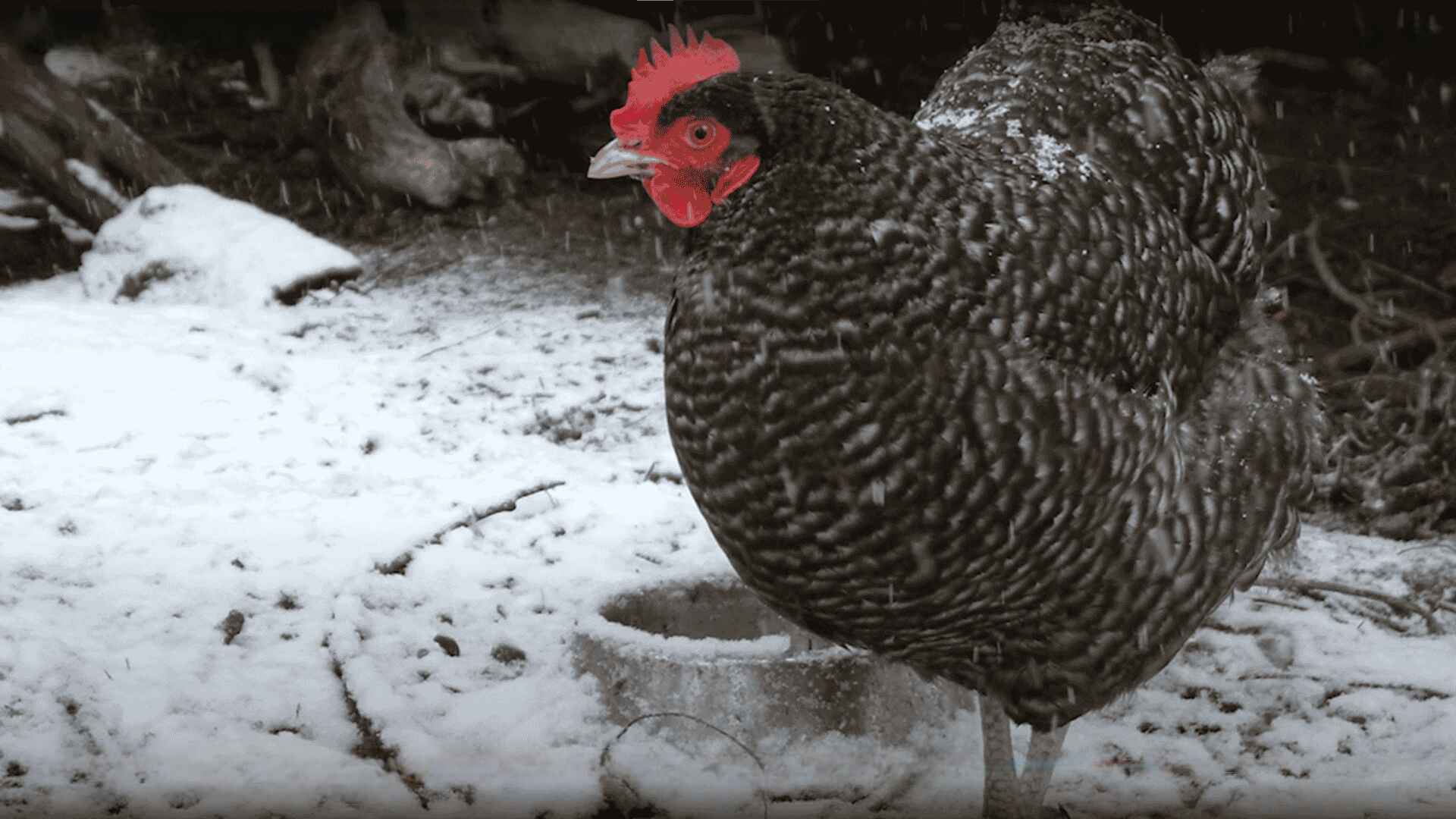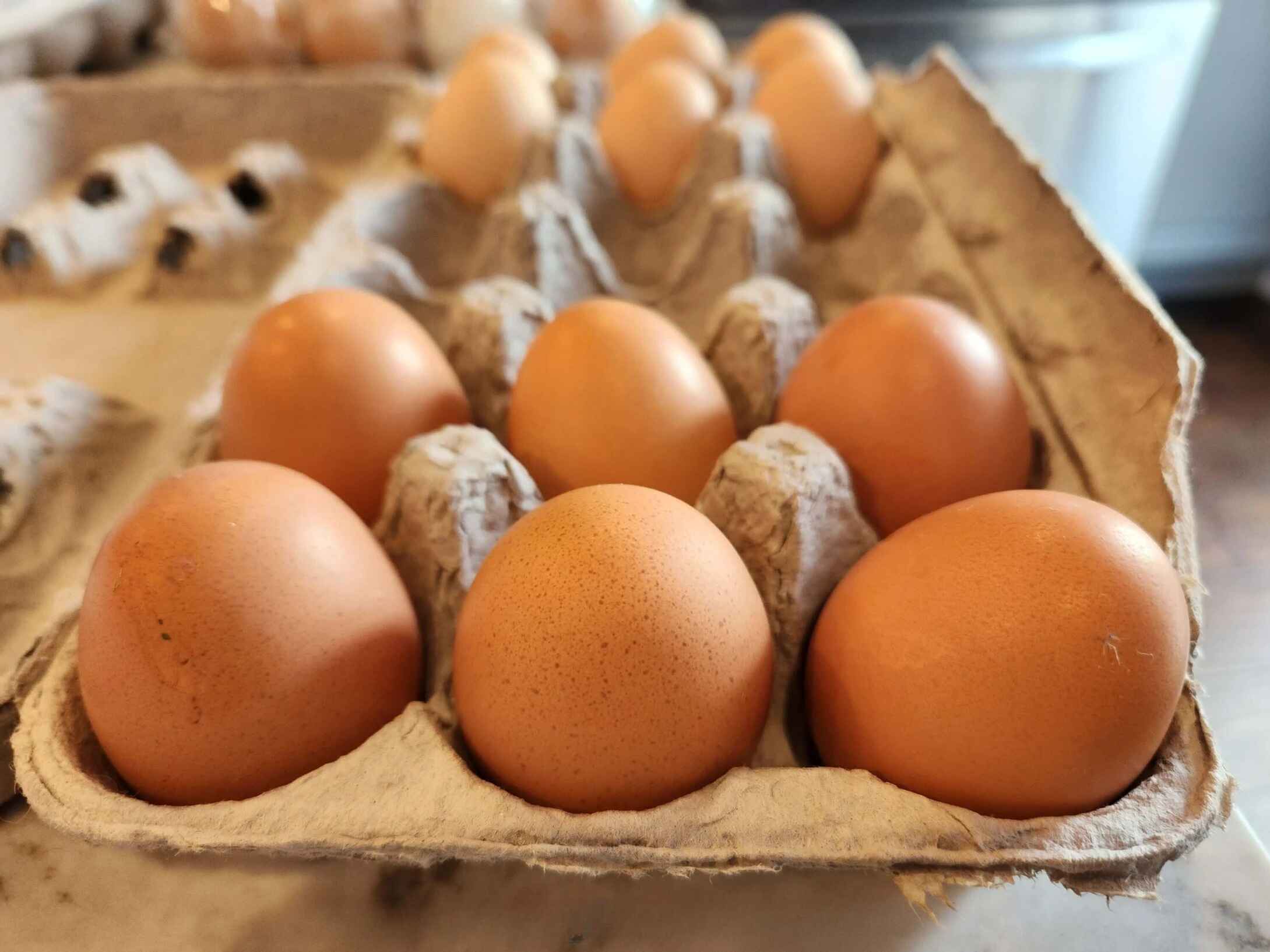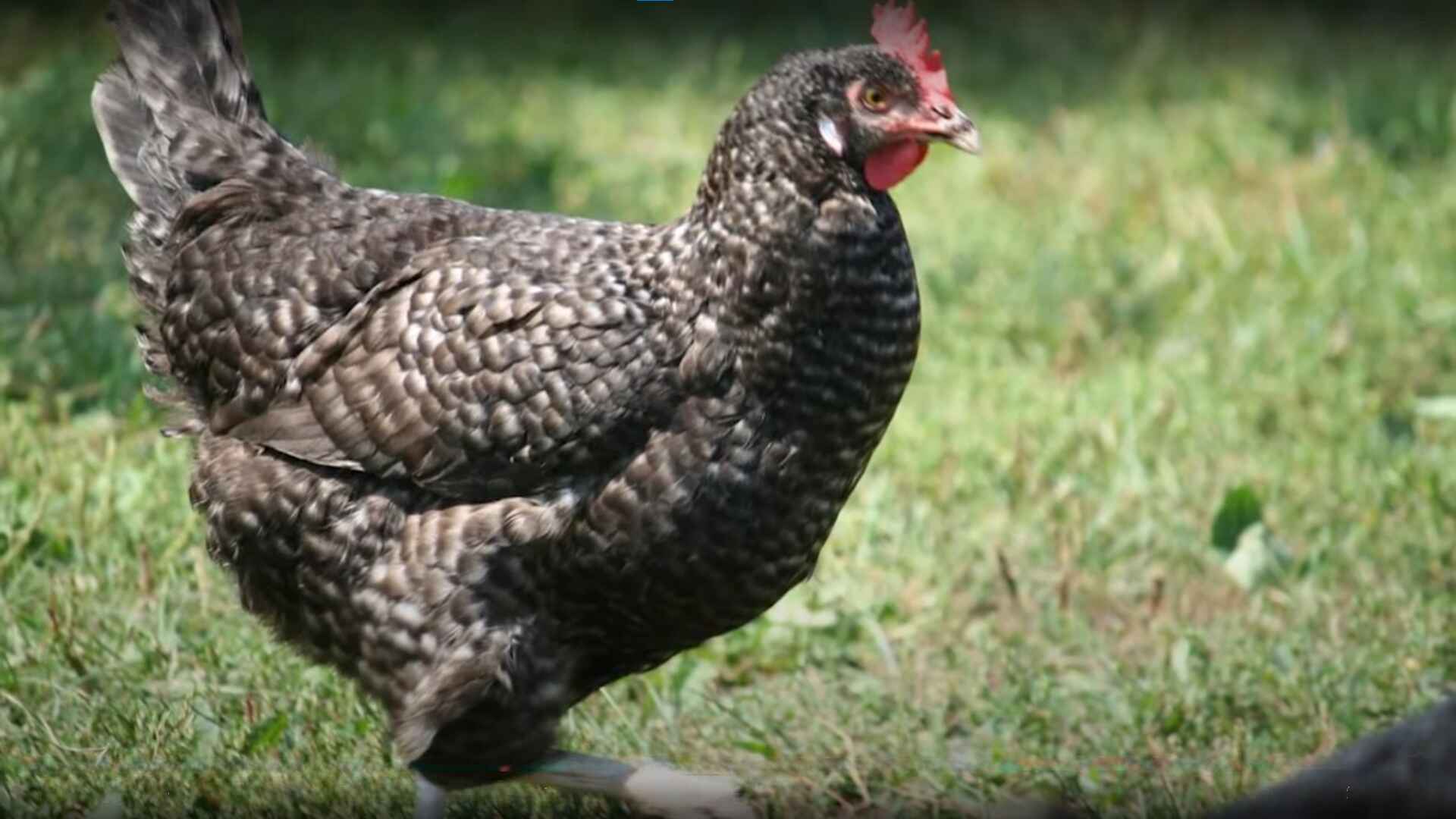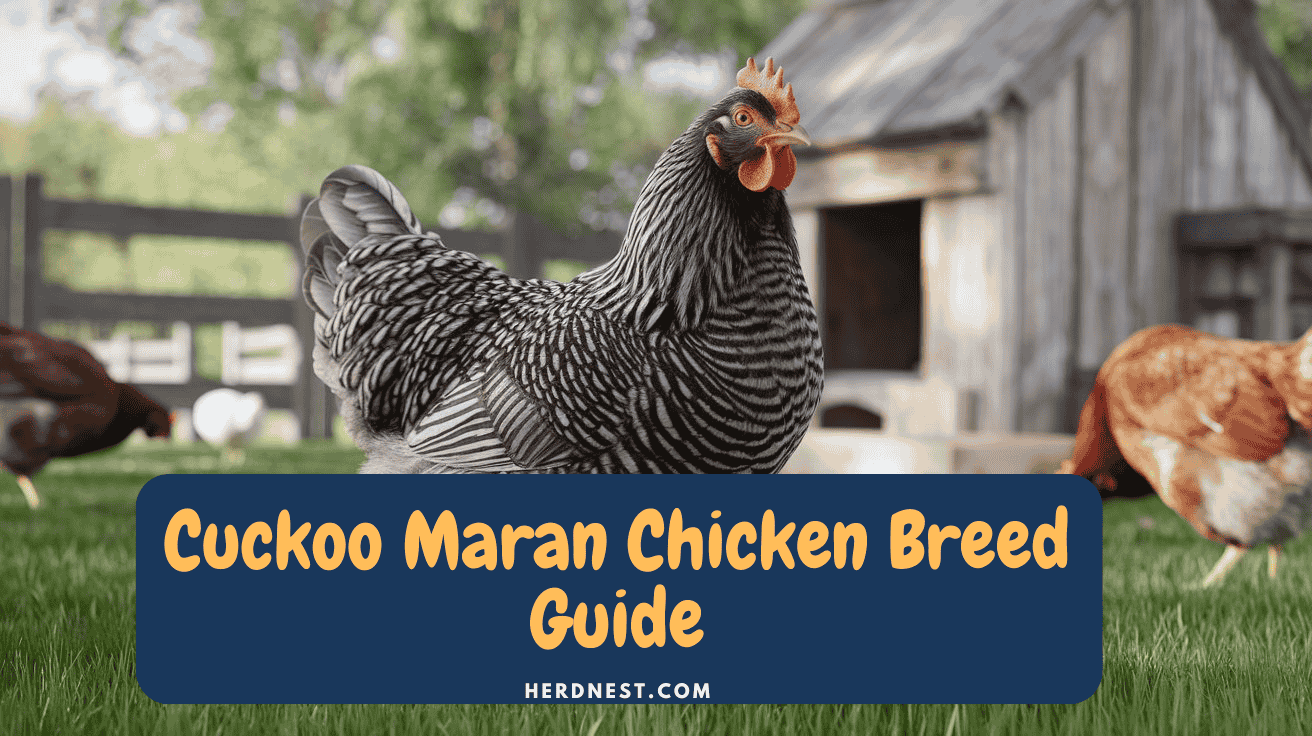Cuckoo Maran chickens are a fascinating addition to the colorful world of chicken breeds. Known for their distinctive feather pattern, French Silver Cuckoo Marans truly stand out with their stunning elegance and rarity.
These chickens are celebrated for laying deep mahogany eggs that are not only incredibly dark brown but also a true symbol of their remarkable breed. This guide aims to provide a comprehensive understanding of their care requirements, offering practical information on their feeding, housing, and general care.
For poultry enthusiasts, these birds have a charming demeanor and have captured the hearts of many in both backyards and barnyards. While friendly and adaptable to mixed flocks, Cuckoo Marans do equally well in confinement or free-range settings.
Their unique characteristics bring joy to chicken keepers, whether you’re drawn to their feather-legged type or their ability to offer both beauty and utility. If you’re aware of their needs and make the right accommodations, these gorgeous birds will thrive and reward you with their famous eggs and delightful presence.

Table of Contents
ToggleCuckoo Maran Chicken Breed History
The Cuckoo Maran chicken traces its lineage back to the 1800s in France, where it was first bred in the region of Marans. Known for its dual-purpose use, this productive breed was originally developed to produce both meat and dark brown eggs. By the 1900s, it had become popular in England and later in the United States, admired for its striking appearance and well-known variations like the Copper Maran.
The Cuckoo Maran is a beautiful bird that owes its unique characteristics to crossbreeding with breeds such as Barred Plymouth Rock, Croad Langshan, Faverolles, and Coucou de Malines.
While its exact combination of traits remains unknown, its large size and early introduction have made it a popular choice for today’s poultry keepers. Whether you’re drawn to its eggs or its adaptability, this breed has certainly stood the test of time.
Are Cuckoo Maran Chickens A Heritage or Hybrid Breed?
The Cuckoo Maran is often considered a heritage breed, originating in France and known for its multiple variations like Black, Wheaten, and White. While the American Poultry Association (APA) has recognized certain variations, such as the Copper Maran, the Cuckoo Maran is not recognized despite attempts by breeders.
This breed holds a special place in poultry enthusiasts’ hearts due to its rich history and unique qualities, making it a valuable addition to any flock.
Cuckoo Maran Breed Appearance
The Cuckoo Maran is a stunning chicken breed with a unique appearance. Its dark feathers are accented with white details, giving it a striking look similar to Barred Plymouth Rocks, but with key differences like a straight comb instead of a floppy one.
These birds have bright red wattles, medium red earlobes, and bare legs, which contrast beautifully with their fluffy tails and darker tones.

How Much Do Cuckoo Maran Chickens Weigh?
Cuckoo Marans are a hardy breed, known for their larger size compared to other chickens. Roosters typically weigh around 7 pounds, while hens are closer to 6 pounds on average.
This makes them similar in size to Columbian Wyandotte’s, with their fluffy feathers giving them an even bigger look. These birds are also cold tolerant, a fact that adds to their appeal for backyard flocks in cooler climates.
Average Lifespan of A Cuckoo Maran Chicken
The Cuckoo Maran has an average lifespan of 7 years when kept in backyard settings or confinement. However, their lifespan may be shorter, around 2 to 3 years, if raised primarily for meat production, as their ability to live declines with age.
These chickens are known to adapt well to various environments, and it should be noted that proper care can extend their healthy lives even as their productivity decreases over time.
How Many Eggs Do Cuckoo Maran Chicken Lay?
The Cuckoo Maran is known for its reliable egg production, with laying starting between 24 to 36 weeks (about 6 months). In their first year, these chickens can produce 220-280 eggs, depending on genetics, a calcium-rich diet, and proper care.
You can expect around 5 to 6 medium dark brown eggs per week, though production may decrease by 10 to 15% as they age. Their egg color and consistency are influenced by their genetics and health, making them a valuable choice for flocks focused on quality.

Cuckoo Maran Chicken Egg Color
The Cuckoo Maran is renowned among breeds for its captivating egg color, laying deep chocolate brown eggs that stand out in any cartons. The intensity of their dark shells can vary, but they are consistently darker than those of other chickens.
These French Silver Marans are an excellent choice for anyone looking to add interest and uniqueness to their flock, as their eggs are a defining aspect of this remarkable breed.
Breeding and Preservation
Cuckoo Marans are a rare and valuable breed, known for their ability to breed naturally without the need for human intervention or insemination.
These elegant French Silver Marans are highly regarded by poultry preservation organizations, which work to ensure their continued existence and the survival of their unique varieties. By supporting breeding efforts, enthusiasts play a vital role in keeping this recognized breed thriving for future generations.
Are Cuckoo Maran Chickens Broody?
Cuckoo Maran hens are known for their strong maternal instinct and are among the broodiest chickens you’ll find. Their fluffy bodies make them excellent at keeping their eggs warm in the nest, and they are naturally great mothers.
During the summer, it’s not uncommon to see a hen going broody, dedicating her time to hatching eggs. This breed’s broodiness is one of its most admired traits among those who appreciate self-sufficient flocks.
Are Cuckoo Maran Chickens Hardy?
Cuckoo Marans are a hardy breed that can adapt well to various climates, thriving in both cold winters and hot weather. Originating from coastal regions in France, their robust constitutions make them naturally resistant to disease and capable of handling extreme temperatures as low as -22°F with proper care.
To keep them warm in winter, ensure their coop is enclosed, free of drafts, and that they have access to clean water to avoid frostbite on their feet, combs, and wattles.
In hot climates, their fluffy feathers can cause discomfort, so provide plenty of shade and airflow to help them stay cool. These chickens thrive with simple tips like maintaining an unheated coop and a healthy environment, making them an excellent addition to any flock in varied conditions.
Common Cuckoo Maran Chicken Health Risks
Cuckoo Marans are generally resistant to many diseases and illnesses, making them a healthy choice for backyard flocks. However, like all chickens, they can face health challenges such as heat stroke during extreme heat due to their dense feathers. Providing plenty of water, shade, and ventilation is a vital precaution to keep them safe.
To prevent deficiencies and maintain strong shells for their eggs, offering oyster grit and calcium supplements is essential, especially for younger birds or active layers. It’s also possible for them to contract parasites, so regular flock care, including adding vitamins to their diet, can help strengthen their overall health and extend their lifespan. With proper care, these chickens will thrive and avoid most complications.
Are Cuckoo Maran Chickens Good For Meat Production?
Cuckoo Marans are considered a good choice for meat production due to their larger size compared to the average chicken. When processed, their meat is known to be flavorful, making them one of the most sought-after-sized chickens for dual-purpose flocks.
These birds are not just practical but also highly valued for their meat, making them a reliable option for those looking to raise a productive breed.
Are Cuckoo Maran Chickens Noisy?
Cuckoo Marans are not overly noisy, but they do make their presence known with their fair amount of sounds. During egg-laying, hens often produce typical vocalizations like squawking, cackling, or even a growling sound when feeling agitated.
While they aren’t the loudest breed, their talking and singing can be more noticeable compared to quieter chickens, especially in more urban settings or populated neighborhoods.
From our experience, roosters can crow regularly, but even the hens can occasionally outshine their male counterparts in volume.
However, in a rural setting or backyards, they blend well with other breeds and are an average candidate for those seeking a balance between productivity and tolerable noise levels.

Cuckoo Maran Chicken Breed Temperament
The Cuckoo Maran is known for its calm temperament and friendly demeanor, making it an ideal addition to family flocks. These chickens are generally docile and amiable, thriving in backyards where they can interact with children and enjoy human interaction. If you’re looking for other easygoing breeds with similar traits, the Plymouth Barred Rock Chicken is also a popular choice among backyard chicken keepers. However, their position at the top of the pecking order means they can show dominance, especially toward new hens in the coop.
While not overly flighty or skittish, they prefer not to be excessively handled or touched but will happily follow you around and even greet you when you approach. Despite their sometimes hardest behavior towards roosters, especially during mounts, their focus on safety and the overall happiness of the flock makes them natural leaders, often referred to as the Queens of the coop.
Cuckoo Maran Chicken Housing Requirements
Cuckoo Marans require proper housing to keep them healthy and happy. Each bird needs at least 4 square feet inside the coop and 10 square feet in an outdoor run, as recommended for this large breed. Their living space should have good airflow and be free of drafts while remaining unheated.
During hot weather, a roofed run with shady access to the coop ensures they stay cooler on sunny days, even when temperatures reach 90 degrees. Protecting them from predators and providing sufficient space helps maintain a stress-free environment for these resilient chickens.
Are Cuckoo Maran Chickens Right For You?
If you’re considering adding Cuckoo Marans to your flock, they can be a great choice for many reasons. These gentle, friendly breeds are ideal for beginners due to their docile temperament and adaptability to various climates, including both cold and hot conditions.
They are a dual-purpose breed, valued for their ability to produce an abundance of dark brown eggs and quality meat.
Their personality and health make them an excellent addition to any flock, as they are naturally hardy with minimal issues. While they may not mature quickly, their key purpose lies in their steady productivity over the year. If you’re looking for a breed that balances utility and character, Cuckoo Marans are definitely worth considering.




